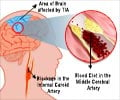Diagnosis of Deep Vein Thrombosis (DVT)
Only 40% of patients with venous thrombosis have any clinical reflections of the condition. A high index of suspicion is necessary for the diagnosis of DVT. The DUPLEX ULTRASOUND may be regarded as the modern diagnostic test of choice for the diagnosis of DVT. The test itself has no risks associated with it as it does not involve any injections (called non-invasive). It combines the techniques of Doppler ultrasound and colour-flow imaging and present it on a screen for a radiologist to make a definitive diagnosis..
Venography i.e. injection of contrast material into the venous system is an invasive technique associated with risks of contrast. It is an accurate method though.
Another modality is the measurement of fibrin, fibrinogen assays. These are factors that take part in the clotting mechanism. When a clot dissolves, a chemical called D-dimer forms. This D-dimer can thus be tested for. However, the D-dimer test is not specific for DVT.
Impedance plethysmography is a technique that is not very useful clinically.
Magnetic resonance venography is a modern technique. It is not widely used since the test is highly expensive. Patients with claustrophobia cannot benefit from this investigation as the MRI console is like a circular tube and the patient’s body need to slide inside it.
















